Our eighth day began with a visit to El Ceibo chocolate cooperative. This diary is about ECOTOP, an agroforestry operation where we had lunch and a tour (and dinner the night before) before driving back to Rurrenabaque.
My trip was organized by Global Exchange and Food First. You can find out about future Food Sovereignty tours at the link.
After our visit to El Ceibo, we visited ECOTOP, a "consultance firm that offers services in the area of rural development, particularly focusing on ecological agriculture" (according to its website). Daniel, who had come with us from Rurrenabaque, simply referred to ECOTOP as "agroforestry on steroids." We had eaten dinner there the night before, and before our tour, they served us lunch.
The meals at ECOTOP were hands down the best food I ate in Bolivia, give or take the pesto llama ravioli I had on my first night in La Paz. Everything they served was grown on site, and the yogurt they served with dessert was homemade from their neighbor's cow's milk (with sweetened hibiscus preserves to mix in with it). Unfortunately, I did not take pictures of the food, and some of what was served were plants I was unfamiliar with. We ate a sort of latkes made out of pigeon peas at lunch, a soup, and a tropical fruit salad.
Then we were introduced to ECOTOP by one of the men who works there. The man behind ECOTOP, who we did not meet, is Joachim Milz, a German who was sent by the German government to work with El Ceibo chocolate cooperative for over a decade (two periods of six years). He founded the farm we visited in Sapecho, which is now an experimental agroforestry operation and a site to hold training courses.
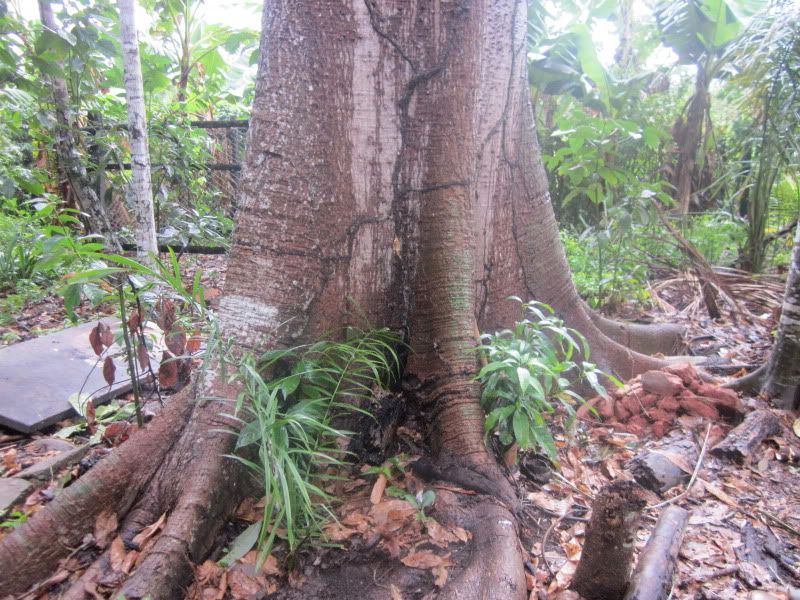
A 20 year old Flor de Mayo tree near the entrance of ECOTOP
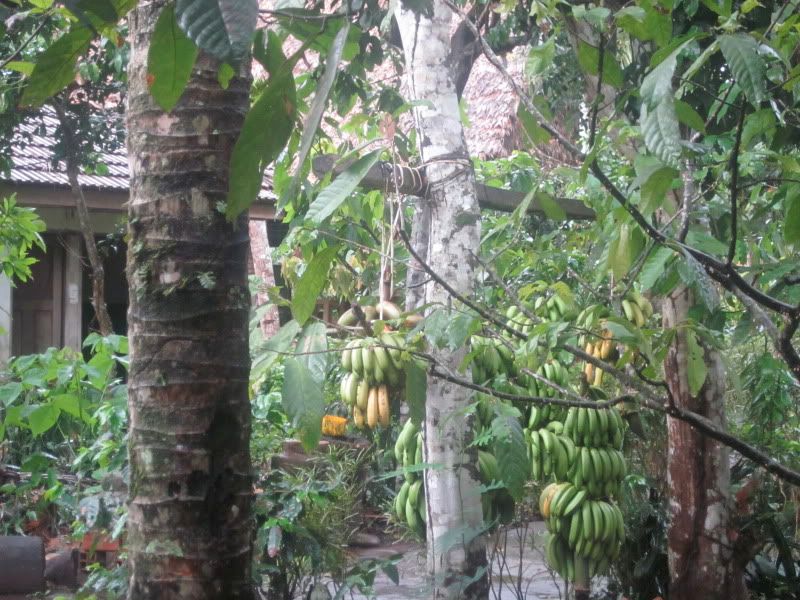
Bananas, near where we had lunch
The land where the farm is located (in Sapecho, in the region of Alto Beni) was cropped in rice repeatedly for 30 years before Milz took over the land in 1990. He began with a rather conventional approach, planning to have an area for citrus, an area for cacao, etc. It was around 1995 that they began experimenting - quite successfully - with agroforestry. Thus, the initial area we toured is still 1.5 hectares of citrus, but now there are several levels of crops growing alongside the citrus.
It's important to note that, while their agroforestry system is said to work well on degraded soils, the farm itself is located in an area with quite good soils. Daniel said that his own farm - with a rather unprofitable agroforestry system - has soils that would rate as a 1 or a 2 on a scale of 1-10 (with 10 being the best, like Iowa's soil). The soils here in Alto Beni would rate a 7 on that scale.
In 2004, they began running experiments in individual farmers' fields. ECOTOP provides the technical advice and all of the plants and/or seeds, and the farmer does the work and keeps the produce. ECOTOP will bring plants and seeds for 20 to 30 species, all of which must be in the right stage of development, and plant them on the same day. They do this with the goals of enriching the soil and producing as much food as possible, particularly in the first few years (as some fruit trees take several years to begin producing).
In this system, the first crop that can be harvested is "40-day beans," then maize, and other types of beans that can be harvested quickly. The same time these crops are planted, they plant cassava, which can be harvested in six months to a year, and bananas, which begin producing at one year and continue to produce for several years. They also incorporate pigs and fish, feeding the agricultural waste products to the animals. (The farm we visited had chickens as well.)
They do baseline soil testing and then track the soil's fertility via analytical testing as well as by more qualitative, observational methods (i.e. digging into the soil to monitor the changes that are occuring). This is all done alongside the farmers who own the land.
Once lunch was done, we began our tour. One thing that is hopefully evident in the photos is that this forest has multiple levels. There are lumber trees at the top, then rubber trees, fruit trees, coffee trees below them, and pineapple plants on the ground. They told us they initially planted rows of pineapple plants, but those got too thick and they pruned them.
There are also some forage peanuts, which are used in this area as a cover crop. The forage peanuts, wild peanuts that are native to this area (peanuts are thought to originate in Bolivia), produce some food, which is fed to the animals. Additionally, any oranges that fall on the ground go to the pigs, but the pigs are not allowed to walk through the forest and forage.

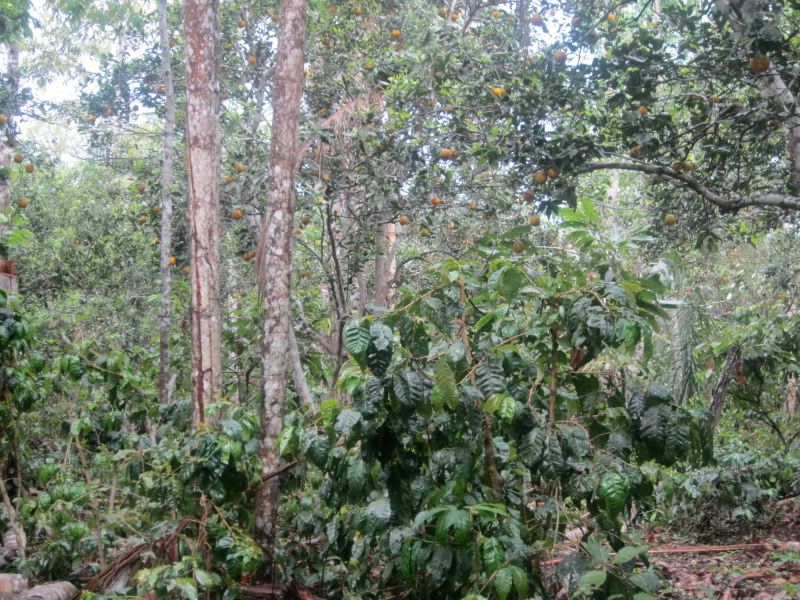
A citrus tree, with a shorter plant (cacao?) growing below it.
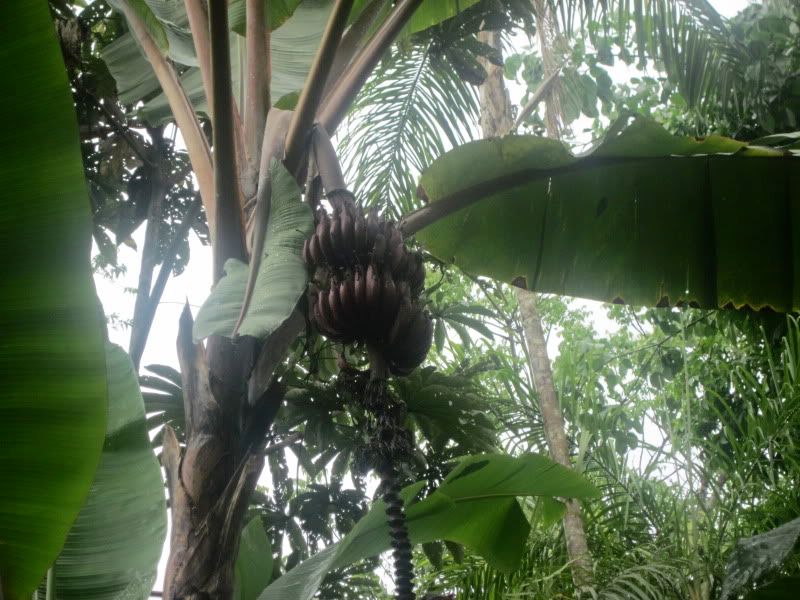
A red variety of bananas


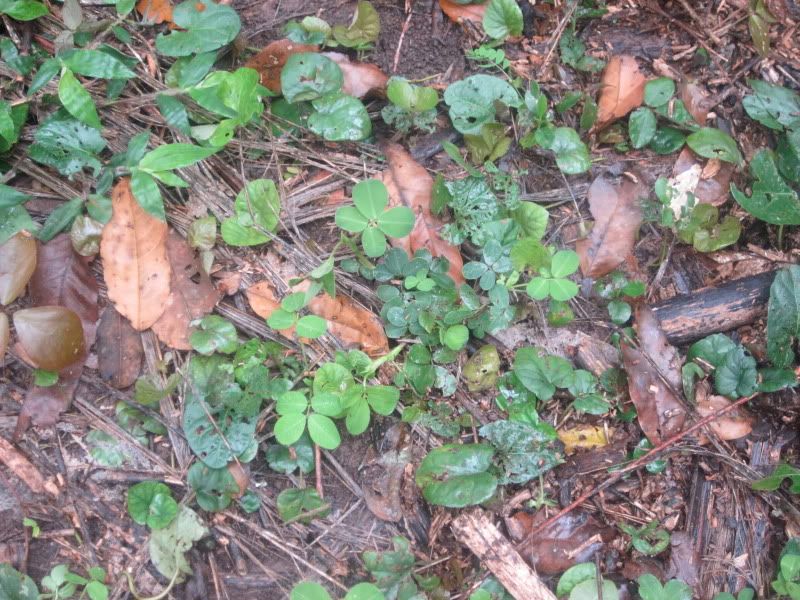
Forage peanuts, grown as a cover crop
As we walked, we saw spices like nutmeg and mace (they grow on the same tree), cinnamon, and pepper. Pepper is actually a vining plant and one of the costs of growing it is putting in supports for the vines. ECOTOP solved this problem by using live supports - trees. At first they tried using pacay (ice cream bean), a leguminous tree, because it did double duty, providing fertility to the soil and supporting the pepper vines. However, pacay is a relatively short-lived plant, so they switched to using longer-lived lumber species as their pepper supports.
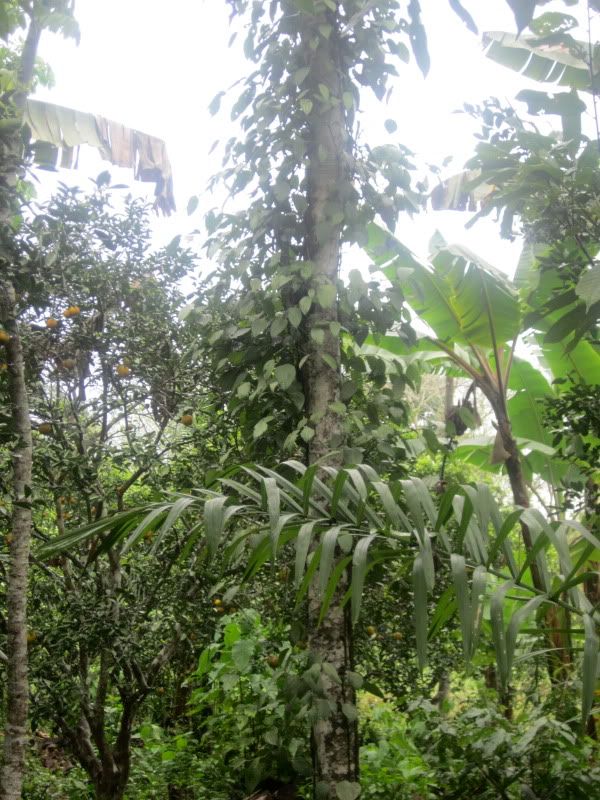
Pepper
We also saw vanilla, which is an orchid. Below are a few pictures of the entire plant (a vine) and then a few pictures of the flower itself.
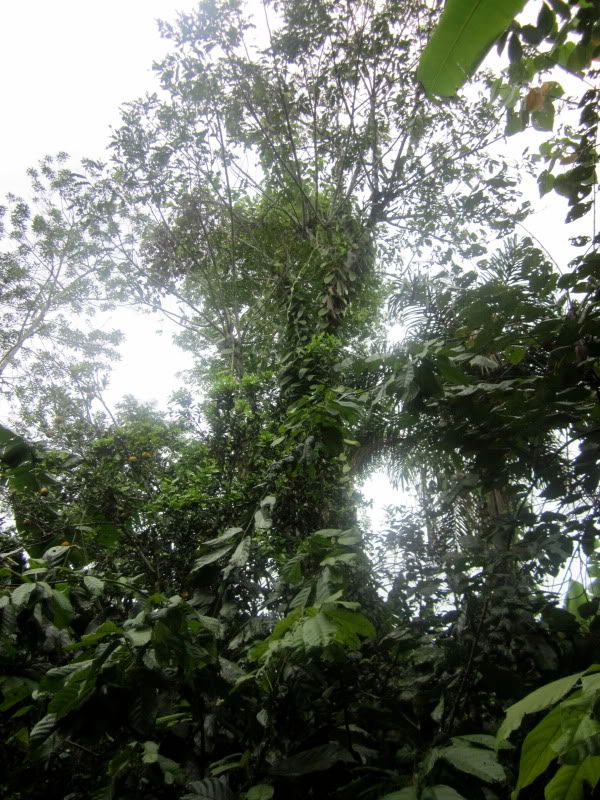
Vanilla
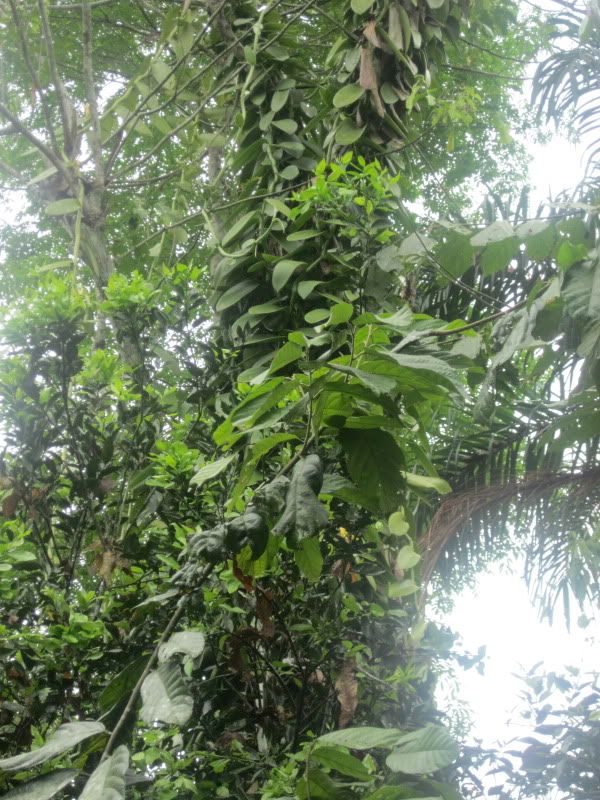
Vanilla
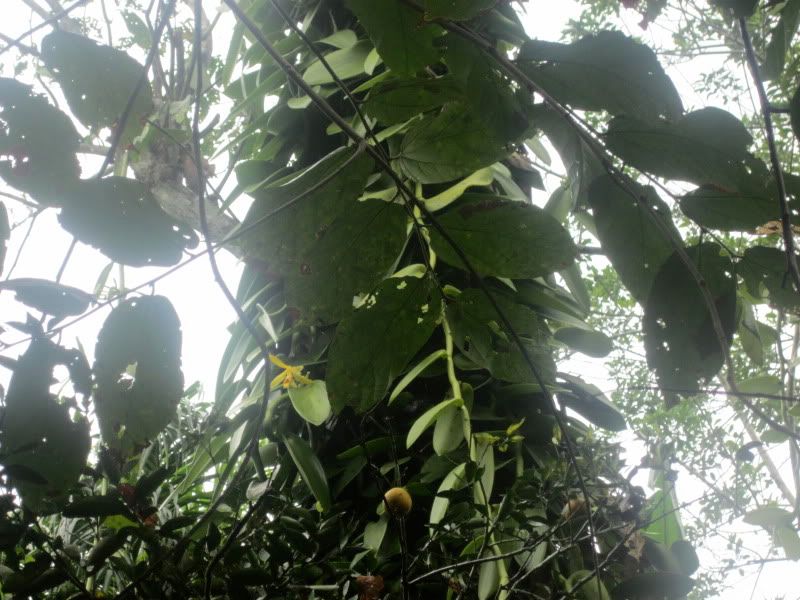
Vanilla flower
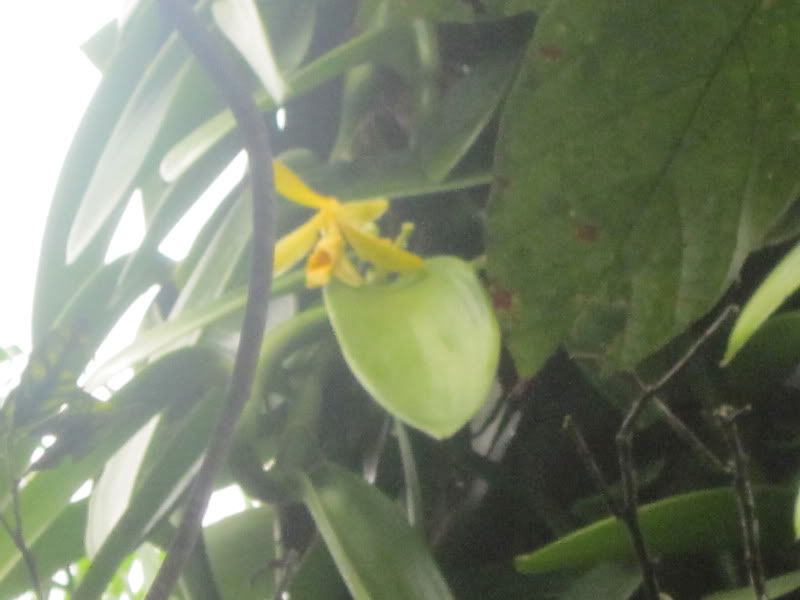
Vanilla flower
One the farm, they do quite a bit of pruning and thinning to make sure that the desirable fruit and lumber species are not being shaded out by undesirable species. They use the wood from the less desirable species that they thin in their oven.
Here, they do quite a bit of manipulation of light to induce flowering of different crops at various types. The citrus that they produce in semi-shade grows fruit that stay ready to sell longer than conventional citrus, allowing them to command a better price. They also chose to put in deciduous lumber species because those trees drop their leaves for part of the year, putting organic matter on the ground and giving more light to the species below them.
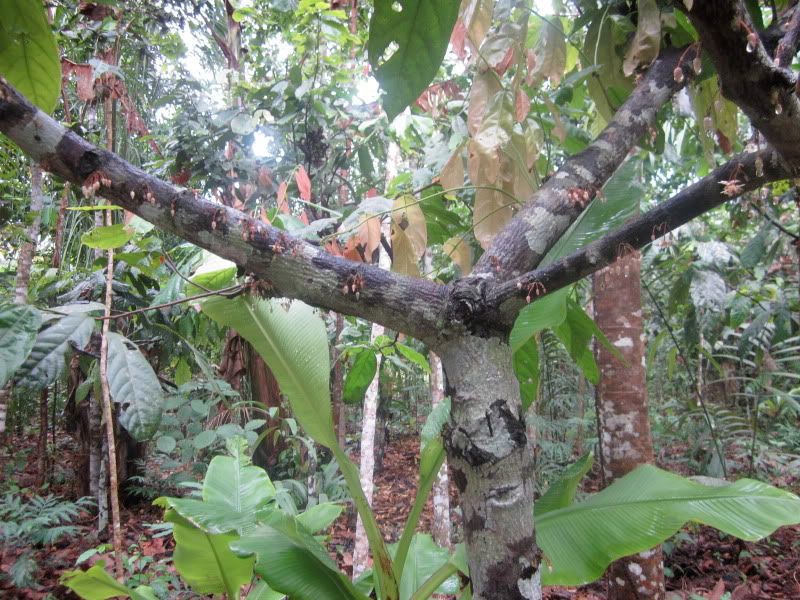
A cacao tree with flowers
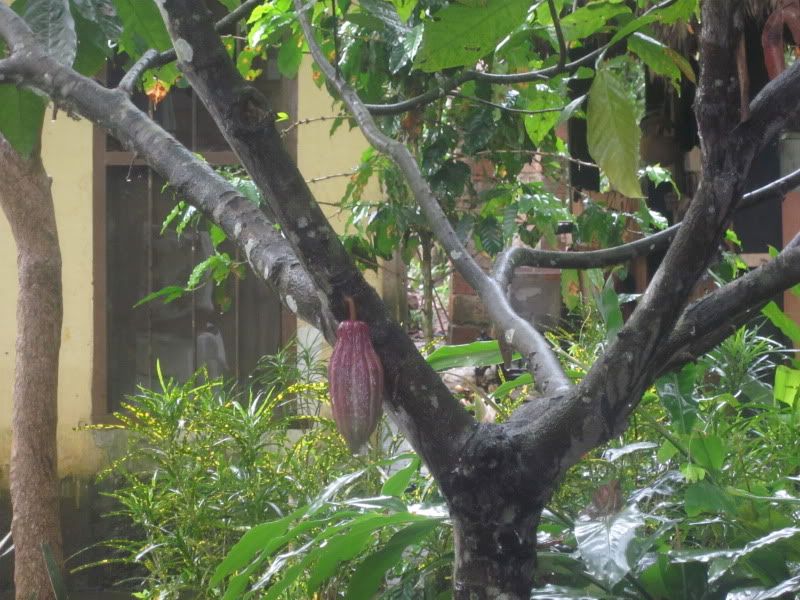
A close-up of a cacao pod (on a different tree)

A zoomed out pic of the same tree
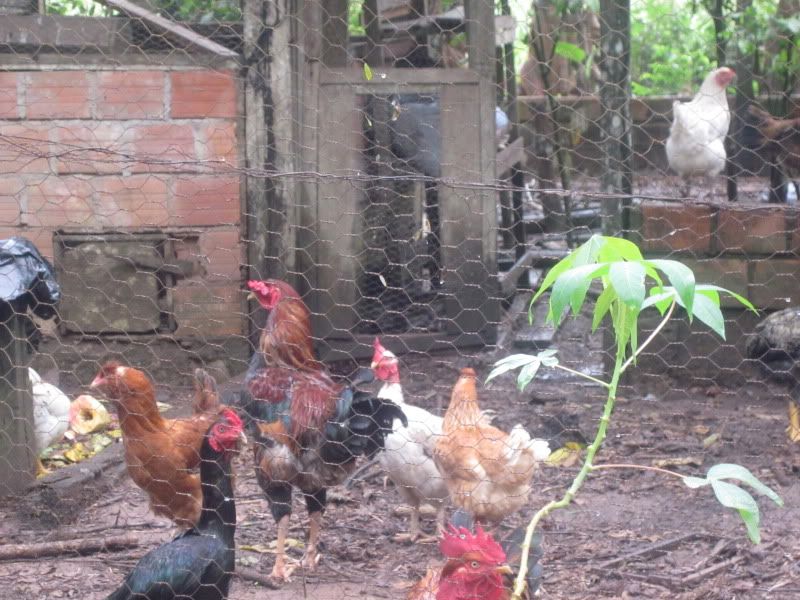
The chickens
Then we came to a peach palm that actually had fruit. We saw several peach palm trees on Daniel's farm but, with his poor soil, he only gets one fruit harvest per year. Here, at ECOTOP, they get two. They can sell the fruit, dry some to make a flour from it, cook some and feed it to the pigs, or give some directly to the chickens.

Fruit of the peach palm
Then we came to some small, experimental plots where they were trying various things. In one, we saw rows of pineapple planted. Nearby, we saw pigeon peas growing (the same plant we had eaten for lunch).
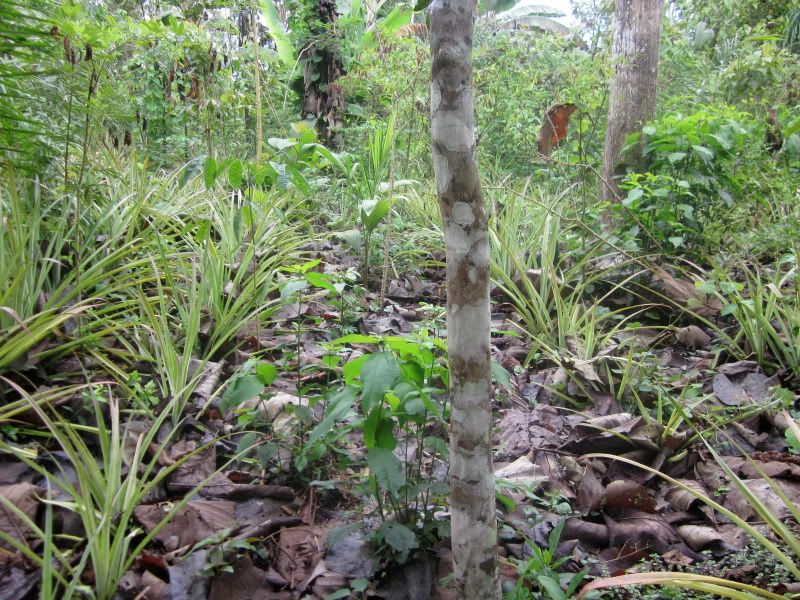
Pineapples
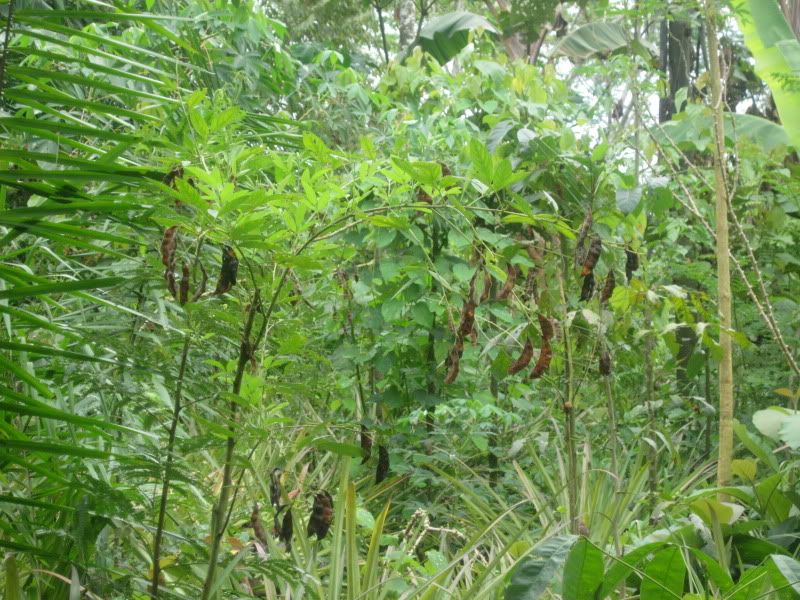
Pigeon peas (the pods on the trees)
It was about that time that a nest of bullet ants cut our tour short. I was walking in the front when I spotted one of the ants and asked about it. Our Spanish-only-speaking guide started yelling "hormiga! cuidado!" and we had a moment of slight chaos, and then turned around to head the other way. On the way back, we passed an enormous bug and a nursery area where cacao, pepper, and other types of plants were growing.
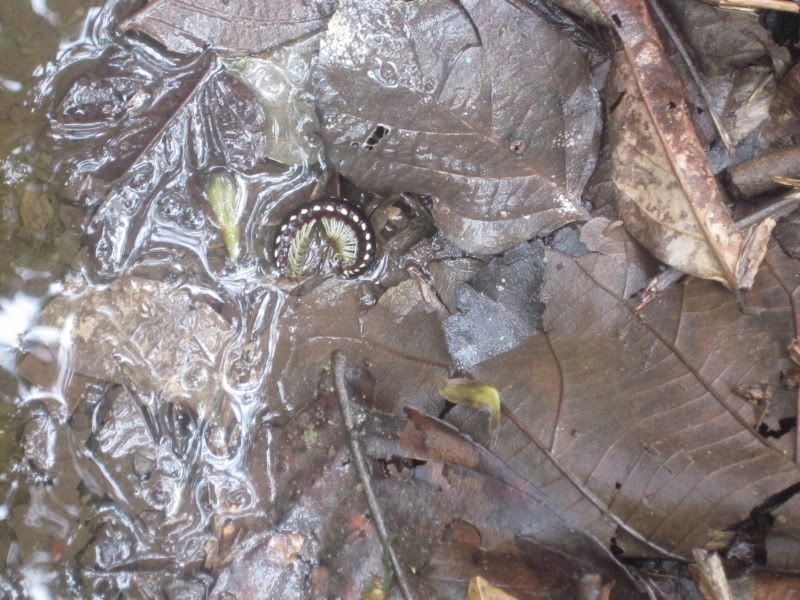
Bug

The plant nursery
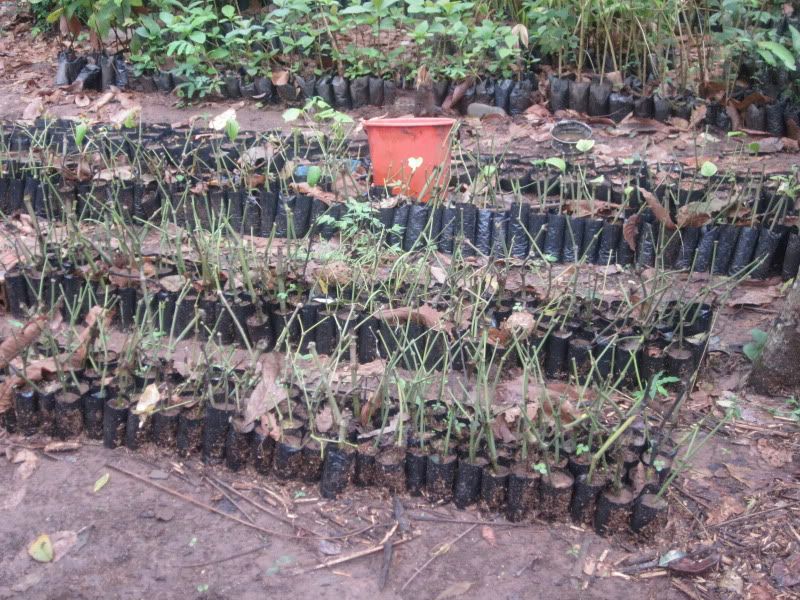
More seedlings in the nursery
With that, I hosed off my muddy feet (it was raining and our tour took us through puddles) and we all got in our cars to drive back to Rurrenabaque. Our wonderful hostess at ECOTOP sent us off with snacks of dehydrated bananas for the ride back and an entire homemade coffeecake to eat for breakfast before our early flight to La Paz the next morning.
No comments:
Post a Comment